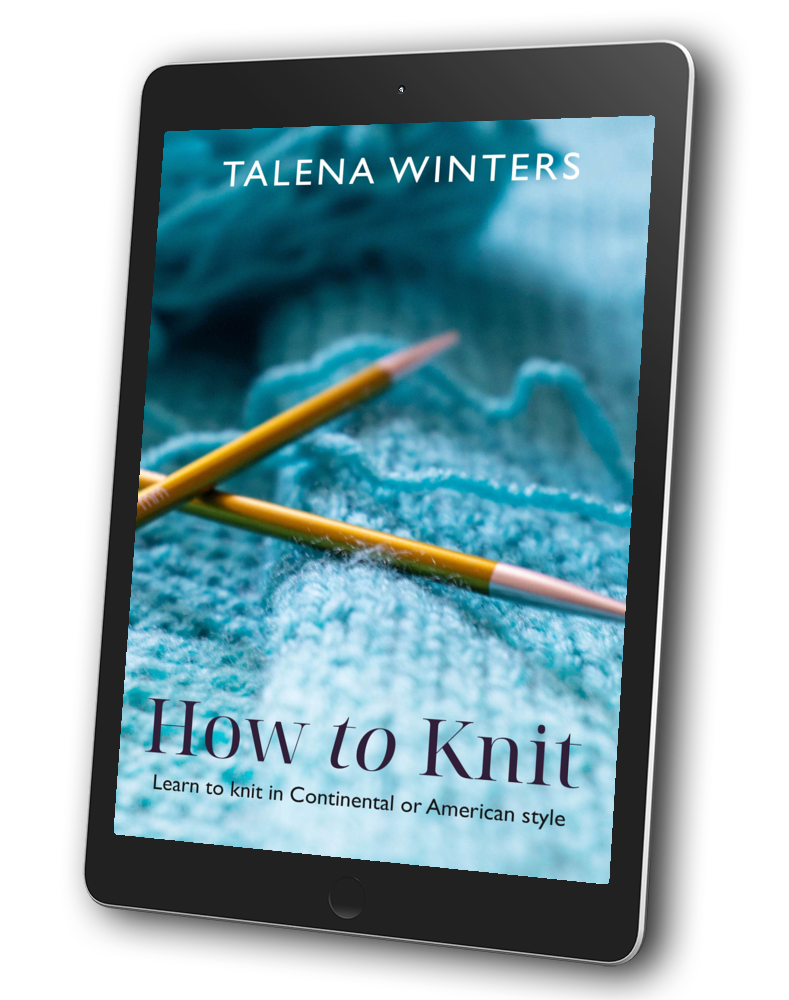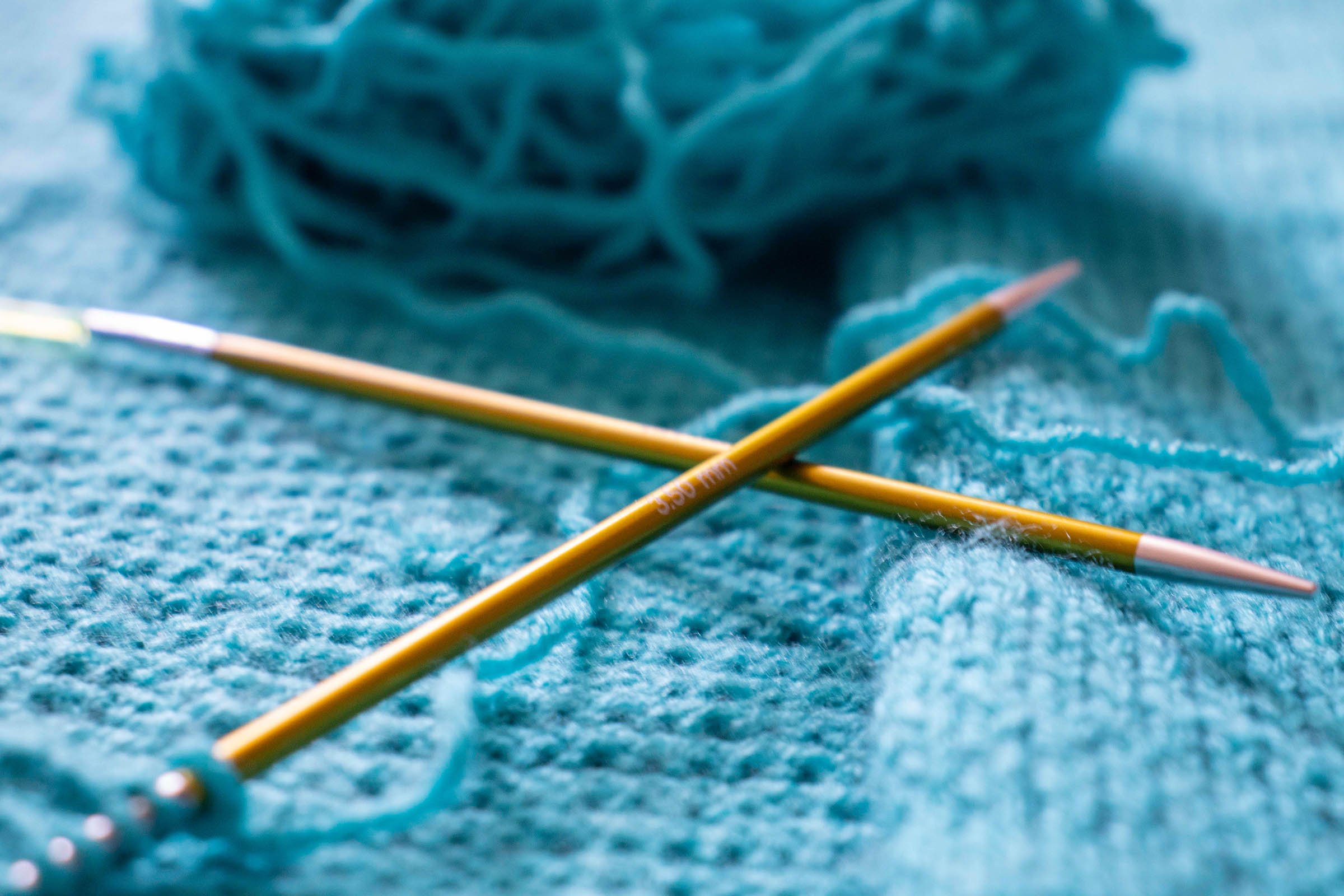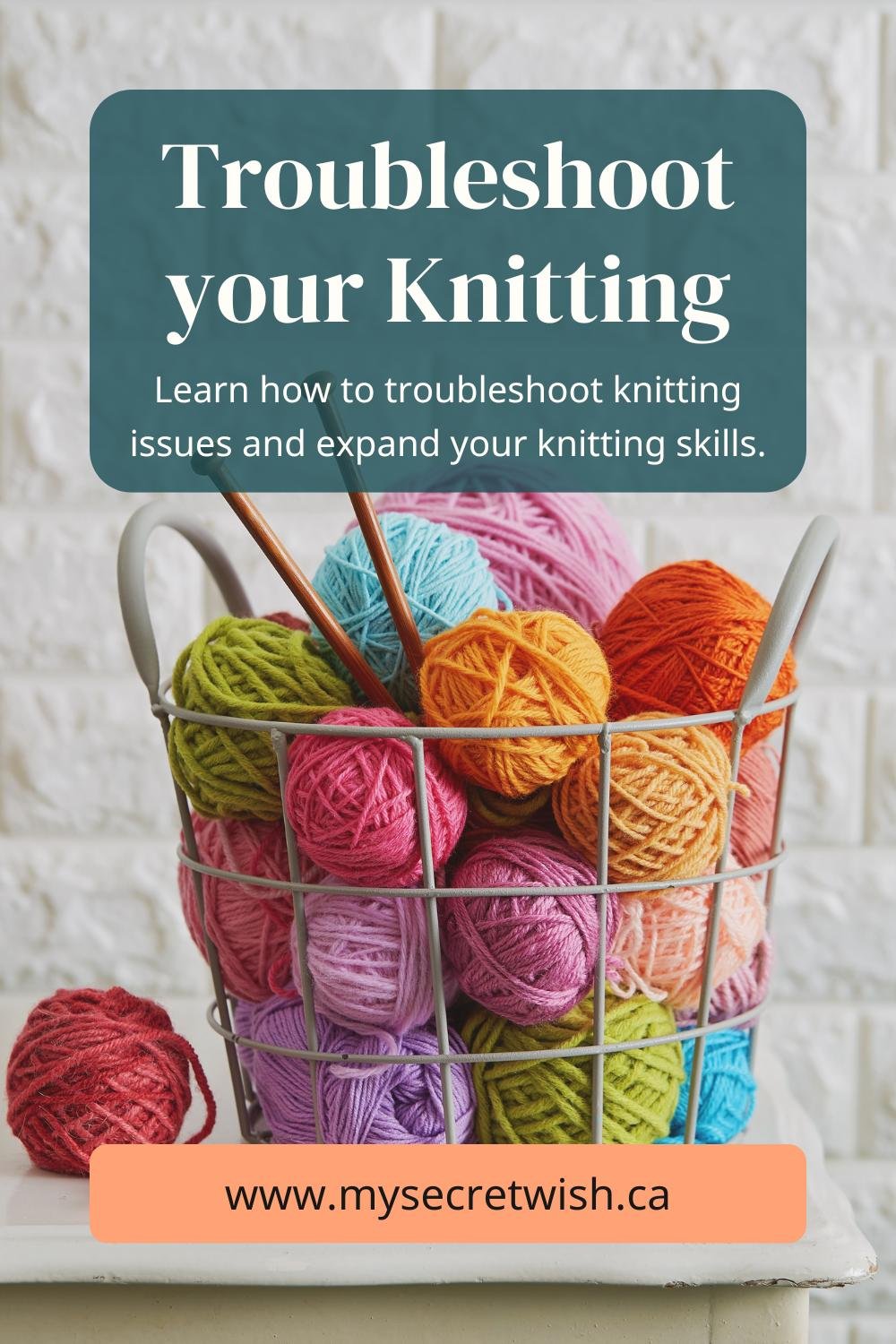
Levelling Up
Learn how to troubleshoot and expand your knitting skills.
Adapted from How to Knit Lesson Fourteen. Get the complete tutorial at the link below.

Learn how to troubleshoot and expand your knitting skills.
Adapted from How to Knit Lesson Fourteen. Get the complete tutorial at the link below.
If you’ve been working through the How to Knit tutorial, you’ve got some of the basics under your belt, but you’ve only just begun on your knitting adventure. Here are some things you’ll want to bookmark and look at as you need them to help you improve your knitting skills.
One of the biggest problems when you first start is improper tension, which manifests as uneven or messy stitches. This is usually because you’re not holding your yarn correctly. If you’re having difficulty picking up your next stitch, difficulty seeing what stitch you’re on, uneven or messy stitches, or are dropping stitches frequently, review “Holding the Yarn” and try again.
After you’ve got tension mastered, you’re still going to run into problems. In fact, one of the reasons knitting can remain so challenging is that we constantly seem to find new ways to mess it up. However, by learning to understand what your yarn is doing, you’ll be able to devise a solution, I promise. That’s what this next resource is for:
I created the Reading Your Knitting series to help you learn to recognize what you’re looking at in your work so you know exactly where you are in a pattern. Start with the first one (Reading Knit and Purl Stitches) right away, and go through the others when you have need of them.
Reading Your Knitting 1: Knit and Purl
Reading Your Knitting 2: Catching and Fixing Mistakes
Reading Your Knitting 3: Increases and Decreases
Reading Your Knitting 4: Cables
These tutorials alone will help you correct many errors. For other links and resources, see the “Knitting Resources” section.
Remember in the course introduction when I said that all knitting is just knit and purl or variations on knit and purl? It’s true. Every beautiful stitch pattern you see is made with variations of these two stitches.
In order to go beyond creating rectangles, you’ll need to learn some of these stitch variations, such as increasing and decreasing to shape fabric, or working yarn overs to create eyelet lace. By using cable needles, you can knit stitches out of order for gorgeous cabled textures of all kinds. And working with more than one colour at once adds a different layer of beauty and complexity to your work.
You can find tutorials to help you develop these skills in my Stitch Tutorials section.
I would encourage you not to wait to try something new. Keep choosing projects that will grow your skills with new techniques, and it won’t be long before you’re the one teaching others how to knit.
And when you do, I hope you find this tutorial helpful for that, too. :-)
Return to How to Knit index:

Hi! I’m Talena Winters (a.k.a. the Yarn Mermaid).
I started My Secret Wish Knitting in 2010 to empower and delight knitting heroes like you who want to elevate your knitting and make magic with yarn. When I’m not concocting new yarn potion recipes, I’m creating story magic as a fantasy and romance author and fiction editor (at talenawinters.com). I live with my family and pets in the Peace Country of northern Alberta, Canada, where sweater weather lasts at least nine months a year and my closest neighbours are bears and wood nymphs.
This website is a labour of love by a team of one (me!). If you found value here, please support the effort by purchasing a pattern. If you want more knitting magic, check out my community events and newsletter in the Knitting Circle. We’d love to have you!

